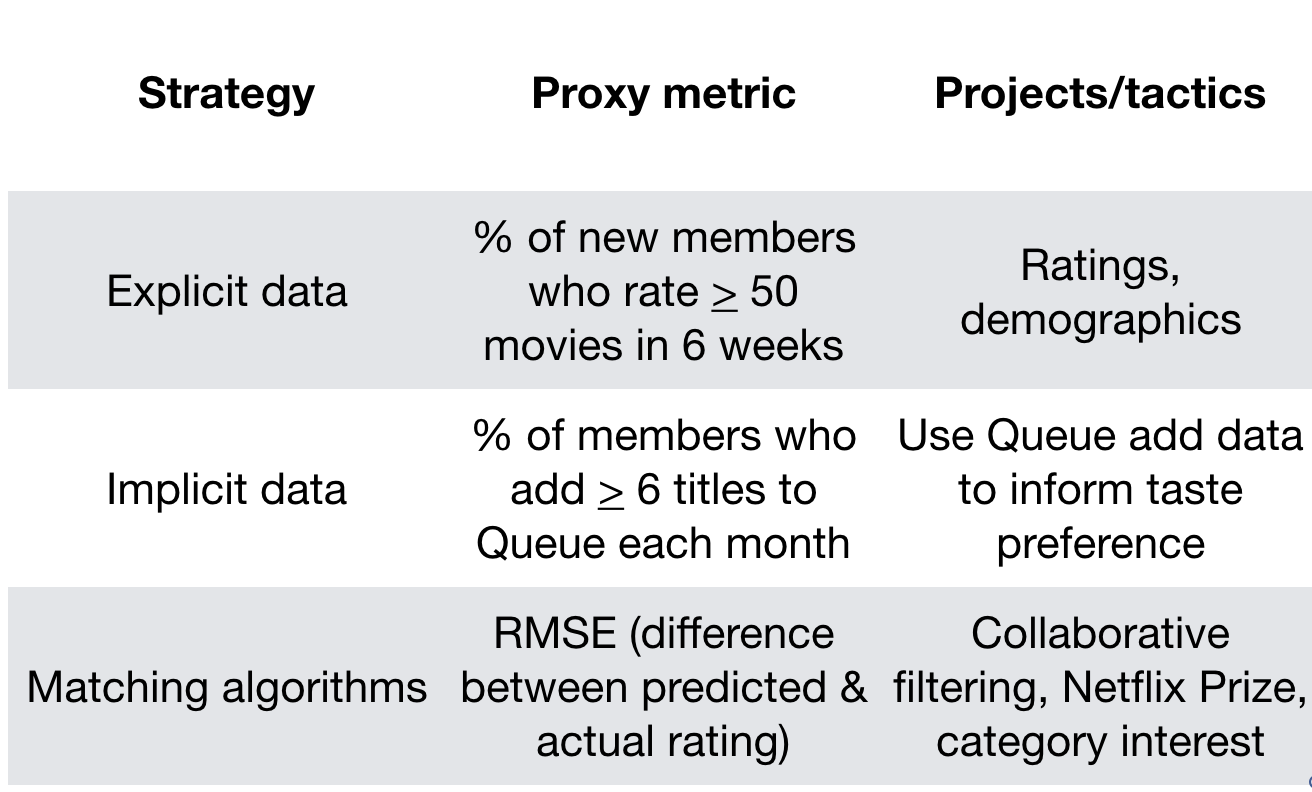# 6 A Strategy for Each Swimlane
How to define the strategies, proxy metrics, and projects for each pod

So far, I have focused on defining the overall product strategy for a company. It’s essential that each product leader within an organization also articulate their pod’s strategy. I’ll provide an example from the personalization team at Netflix, circa 2006. At the time, Todd Yellin was the product leader of a group of engineers, designers, and data analysts. (Today, Todd is VP of Product Innovation at Netflix.)
Todd understood that the goal for the product team was to improve retention and hypothesized that a personalized site experience would help to accomplish this. His topline proxy metric was:
- The percentage of new members who rate at least 50 movies in their first six weeks with the service.
The theory was that if members were willing to rate lots of movies, it meant they valued the results of their rating: personalized movie choices.
Here is a simplified version of Todd’s strategy, along with proxy metrics and projects:


Here was the thinking at the time:
- Netflix would gather lots of taste data from its members — either through explicit ratings or implicit behavior (titles they “hovered over” or added to their queue).
- The team would gather lots of data about each movie — genre, actors, directors, whether it was a “feel-good, leave your brains at the door comedy,” and other detailed attributes of each film.
- Given an in-depth knowledge of members’ movie tastes, and data about each movie, matching algorithms would connect members with personalized movie choices.
Over time, Netflix moved the proxy metrics, and in the long-term, proved that a highly personalized experience improved retention. Today, I describe the personalization effort at Netflix as a ten-year “leap of faith.” It took more than a decade to prove that personalization improved retention. A steady improvement in the proxy metrics, however, provided a strong signal that we would eventually succeed. We kept “doubling down” on personalization because all of its proxy metrics were improving.
In 2005, I had a product leader focused on each of the following areas:
- Personalization
- New member acquisition
- Social (“Friends”)
- DVD merchandising
- Help & Account
- Used DVD sales
- Advertising
Each product leader worked with a dedicated team of engineers, designers, and data analysts, and could articulate their high-level engagement metric, along with the key strategies, proxy metrics, and projects for their area.
Product Strategy Exercise (#8)
For each swimlane in your product organization, identify the proxy metric, each product leader will move — their high-level engagement metric for their pod — along with strategies, proxy metrics, and projects. Ideally, this work is done by the product leader for each swimlane.
In the next essay, we’ll input your high-level hypotheses and projects into a four-quarter, rolling roadmap:
Best,
Gib
Gibson Biddle
PS. Here’s an index of all the articles in this series:

